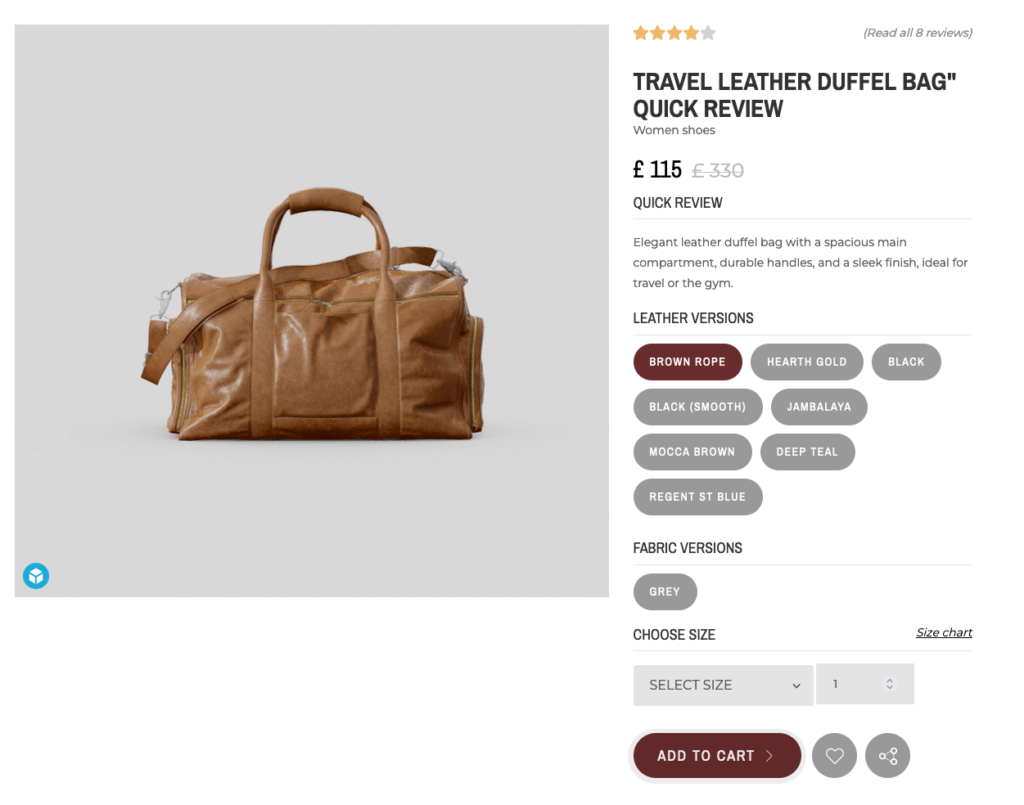In the rapidly changing marketplace of ecommerce and digital retail, the capability to show products in a realistic interactive way has become a game changer. This is particularly true in the furniture industry in which the feel the product has, its appearance and the fit of the item are major factors in the buying decision. The 3D configurator is an revolutionary tool that is revolutionizing the way people purchase furniture online and in store.
The Rise of 3D Product Configurators
A 3D Product Configurator is a digital product that lets customers view and interact with the product in three dimensions. In contrast to static images, 3D configurators allow users to zoom in, rotate and customize their items in real time. This is becoming increasingly popular in the furniture market, providing a dynamic and exciting shopping experience.

Enhancing Customer Experience with Online Furniture Configurators
The improved customer experience furniture configurators can provide is among the most significant advantages. Customers can personalize the colors, finishes and the materials of furniture pieces as well as view it from different angles. Additionally, they can visualize how their new furniture would work in their living space. The interactive shopping interaction makes shopping enjoyable and helps customers make better-informed buying decisions.
For instance, the 3D furniture configurator lets users alter their shopping experience with amazing 3D quality and custom options. This level of interaction helps bridge the gap from physical to online shopping and gives customers confidence about their choices.
3D Interactive Furniture Configurators Promoting Sales on E-commerce
The effect of 3D product configurators on online sales is huge. Interactive 3D visualisations have the potential to increase conversion rates and reduce return rates. When customers are able to know exactly what they’re buying, they’ll be more likely to complete the purchase.
A 3D furniture configurator also allows retailers to showcase a vast range of product variations without the need to produce and photograph each one. It allows retailers to present a a wider range of products and cater for different customer preferences.
The Future of Furniture Shopping: Immersive 3D Configurators
As technology advances, the future of furniture shopping will be determined by 3D immersive configurators. These tools are set to become even more sophisticated by incorporating features like AR (augmented reality) (AR) and virtual reality (VR) to enhance the shopping experience.
For instance, shoppers could make use of AR to imagine furniture pieces in their own living space on their mobile or via VR to stroll through an online showroom and view the products in a realistic setting. The shopping experience is enhanced with these new technologies.
Implementing 3D Product Configurators: A Guide for Furniture Makers
For furniture makers and retailers the idea of implementing an 3D product configurator may seem daunting. The benefits are greater than any obstacles. This is a step by method guide on how to start:
Select the right platform: Select an 3D configurator platform which is in line with your business requirements and goals. Look at features like flexibility, customization, integration, and the ability to scale.
Create 3D models that are high-quality of your furniture. Employers can assist in ensuring accuracy and details.
Integrate the Configurator into Your Website. In conjunction with your website’s development team to seamlessly integrate the configurator with your online store. You must ensure that the store is mobile-friendly to accommodate users from all devices.
Increase your experience using AR/VR. You can consider adding VR or AR capabilities for an even more immersive experience.
Market Your New Tool Promote your new 3D configuration tool via your marketing channels. The benefits you can offer your customers, and provide instructions on how to use it.
The conclusion of the article is:
The adoption of 3D product configurators has revolutionized the furniture industry by providing unparalleled customer experience and increasing sales. These tools allow customers to modify and interact with the products in real time, bridging the gap between online shopping and in-store purchase. It makes the shopping process more enjoyable and informative. The integration of AR/VR technology will continue to transform the retail landscape as technology advances. Immersive shopping experiences are the new trend. It is clear that embracing this technology by furniture producers and retailers isn’t an option but an imperative requirement to compete in a digital world.